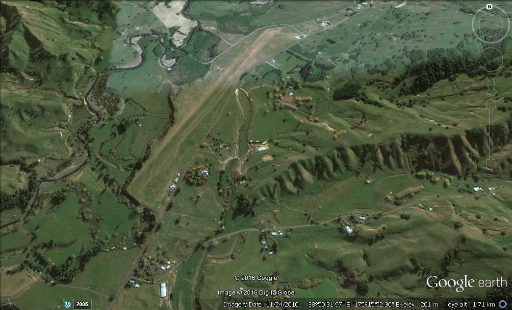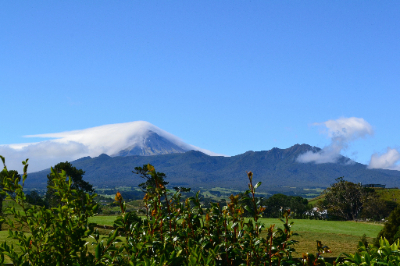



Background to the Club
There were not, in the late fifties, the number of exuberant sport activities available to people that there are in these times. The sense of the magic of flying that abounded pre-war had not abated. In spite of the casualties from war-time flying, the fascination had not lessened. The NP Aero Club had a good number of members who had had plenty of wartime experience and still were keen to fly even if the Aero Club fleet of Tiger Moths were a far cry from the bombers, the DC3’s, Mosquitos, Spitfires and so on. A trio of Tiger Moths, roped together and doing aerobatics provided some excitement.
Thus it was that in 1958, the Aero Club formed a Gliding Section and purchased a T31 from the Auckland Gliding Club. This venture immediately attracted men such as Ivan Chinnery-Brown who had been involved in glider construction pre-war and an LAC in the Pacific during the war, Harry Smith ex-RAF bomber and transport pilot, Batch Collins, a territorial Mustang pilot and Clarry Parker, a Ventura pilot in the Pacific theatre and not to forget Banger Martin….. and Dave Avery who was a Mosquito pilot with an Australian squadron. Some of these men enlivened things up by doing aerobatics with Aero Club Tiger Moths linked together by rope.
Though the Gliding Section was active enough, the concept did not fit with the way that the Aero Club worked, so, to the dismay of the Glider boys (and girls) the glider was sold. They were however, ready to meet the challenge. A meeting was held, a club was formed, 232 (at five pounds each) debentures sold and an order placed with the Sleicher glider manufacturer of Germany for a Rhonlerche two seat trainer.
Harry Smith was the first President and Batch Collins the CFI. Gordon Addenbrooke who thought he was going to a vintage car meeting, found himself instead, to be on a gliding club committee. Of the debentures, some were donated, some redeemed and the remainder written off in 2014.
It may have been into 1961 by the time that the club began flying with Batch Collins as its first CFI. Aero tows were provided by the John Brough/John Pheasant with their Tiger Moth and winch launches also began, using a winch made by Ivan Chinnery-Brown and Hec Strampel. Caroline Smith made her first solo fight during this time. Flying was done at Bell Block, Stratford and various other places which included Norman and Mona Jones property at Kaimata. A truck owned by the club, parked during the week in a WR Philipps yard at Waiwakaiho was stolen. The thieves cut the gate padlock, grabbed the truck and put a new padlock on the gate. There were several accidents which curtailed flying from time to time. I’m unsure of the background to them but misjudgement of height and circuits could have been involved. The last major one was in 1966 involving winching from a farm paddock. A t/o shambles saw the glider first knocking Murray Smith over then slamming into a hedge When I joined in January 1967 the club was back in full swing, winching off the Bell Block Airfield and able to run out a fair length of wire. Banga Martin was the CFI and the Stonnell brothers provided radios for the winch and launch point and Dick Stonnell’s Nash Rambler for pulling out the wire. Earlier, flags had been used but the length and curvature of the airfield meant that sometimes a couple of flag wavers were needed between the launch-point and the winch. Flying activity was every Sunday, winch launching at Bell Block Airfield. A launch rate was achieved though the flights were of short duration from the usual 800ft launch height. The activity often running through to Civil Twilight. . Poor gliding days never a feature. If flying could happen, it did. Cable breaks were frequent. A club trip to Matamata led by Banger Martin was most successful. The partially obscured label on the Rhonlerche immediately noted as “the Taranaki Ding Club!”
The AGM in August 1967 saw a big change in the committee makeup. Clive Sherman elected President, Brian Quickfall the Secretary, L Martin the CFI and Bob Struthers becoming Club Captain. During the next twenty-five years Bob was to lead a programme of dynamic progress and flying, quite unprecedented, before or since.
(This page is a practice run with a couple of random photos and text from a club history that I have underway. So it is not a Recent News Page.